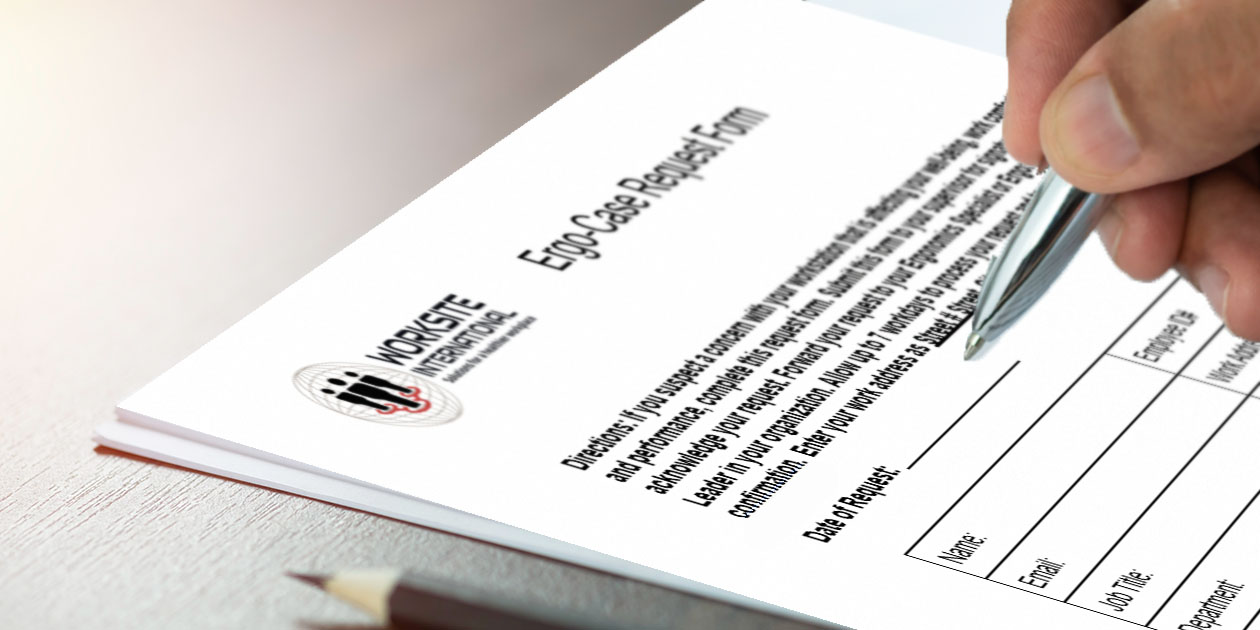Small to mid-size enterprises (SME) typically take a transactional approach to using the science of ergonomics.
Transactional ergonomics is used as a one-time solution to impact one or more employees for a particular reason, such as using an assessment for onboarding, workstation setup, and injury prevention. Or utilizing it reactively as part of a workers’ compensation management strategy.
The challenge with a transactional approach is it is not always a transparent process shared throughout the organization as a strategy available to all employees. How do your employees access your ergonomics evaluation process?
Three Essential Communication Tools
Based on the six tenets of an ergonomics process (EP), ergonomics regulations, and global considerations, there are three essential communication tools every SME needs to ensure the transactional response is timely, transparent, and effective. 1. A Written Game Plan (Ergonomics Process Policy) 2. A Standard Operating Procedure (SOP) or Ergonomic Evaluation Procedure 3. A “Gateway” ergonomic evaluation request form
1. The Written Game Plan- Ergonomics Process Policy (EPP)
It is commonplace for employers to have corporate policies and procedures for all sorts of HR and safety processes, along with an employee handbook. It also makes sense to have a well-defined ergonomics policy to define the organization’s approach to using the science of ergonomics so that all those impacted know what to expect and how to proceed. From leadership to management to technical support to employees, the policy serves as a written game plan for a sustainable and consistent process.
Components of an Ergonomics Process Policy include:
- Purpose and scope of the policy
- Leadership and management’s commitment
- Employee engagement and accountability
- Technical support roles: Facilities, Purchasing, IT, Maintenance
- Ergonomic Evaluations
- Control Measure Implementation
- Ergonomics Training
- Metrics Tracking for Outcome Measures
- Ergonomics Budget process
- Compliance
Other sections can be added to this list, such as change management, workers’ compensation, and disability management, etc. Together these sections make up the ergonomics process policy serving as the game plan for the organization to follow each time ergonomics is needed.
2. The Ergonomic Evaluation Procedure (EEP)
The Ergonomic Evaluation procedure is a step-by-step process flow that delineates the expectations of the key players in the game and their roles. The EEP should call out each role and action along with essential forms utilized, from the time the request is made to the evaluation setup, report write-up, distribution plan, report review, and implementation of control measures.
The EEP should include time allocations for every step for quality control measures. The process should be transparent and participatory, meaning the employee is engaged from beginning to end and agrees to the actions recommended by the ergonomics specialist through report review and signature with their supervisor.
3. The Ergo-Case Request (ECR)
The most important part of the ergonomics game plan is how employees enter through the gateway into the process. The ergo-eval request or ergo-case request form (ECRF) is the primary gateway to request assistance and enter your ergonomics process.
The ultimate MSD claim avoidance strategy is the Ergo-Case Request form (ECRF) (otherwise known as the ergonomic evaluation request form (EERF). It is a fillable form submitted by the employee to request ergonomics assistance by detailing the type of eval needed and the reason. This form serves as the primary way to enter the ergonomics evaluation procedure beginning with a formal written request.
The ECRF is submitted to the supervisor for acknowledgment of the request (signature) and submitted to the Ergonomics Process Leader or Specialist to begin the ergo evaluation procedure (see #2). The ECRF is foundational to starting the employee’s ergonomics evaluation journey and all subsequent actions taken thereafter.
By avoiding phone calls, back and forth or missed emails, or word-of-mouth forgetfulness, the employer can now collect the most essential leading indicators identifying why the evaluation is needed using a standardized format. Tracking these indicators is a foundation of the metrics, measures, and ROI calculations every ergonomics process needs to show its value to leadership.
SMEs Need the Right Game Plan and Pieces
Regardless of whether an employer takes a systems approach or a transactional approach, these three communication tools are essential to a quality, best practice ergonomics process. A written ergonomics policy, an ergonomic evaluation procedure, and the” gateway” Ergo-Case Request form. When all three are in place, employers and employees are bound to win through prevention and better management of common ergonomic exposures successfully using the science of ergonomics.
Are you an SME wanting to improve your ergonomics process? Start by downloading our Ergo-Case Request form as the gateway to your ergonomics process. Use the form to track critical leading indicator metrics useful for your EP.
Want to go further? Schedule an ergo process consultation, and we'll help you get started.
It's as easy as 1-2-



Comments